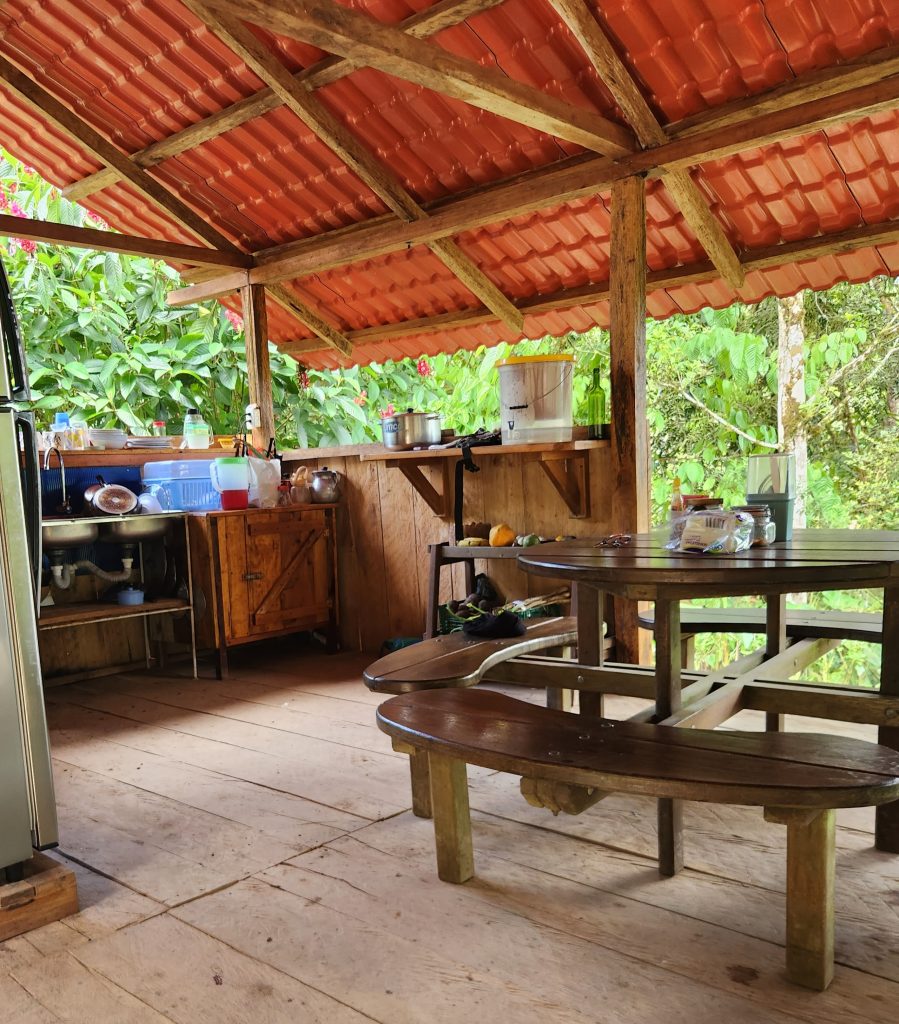As I write this, I’m just starting my second week at my Independent Study Project (ISP) location. I’ve moved from the capital city of Quito to a small town in the Choco Cloud Forest called VillaFlora. Suffice it to say, it’s very different here! As I go through another new start, I’m keeping in mind what I’ve just learned and wrote about in my last post: forming connections takes time.

I remind myself that it will take time to find my habits here and build relationships with my neighbors. This is especially true in a culture that is more reserved than that of the city, and with a community where everyone has known each other their whole lives, and is basically one giant extended family. I’ve felt welcomed here, but I’m nowhere close to being a local.
Here, for me, everyone is “usted” (the formal version of “you”). That is, save Lia,*my friend’s adorable 3-year-old host sister. I use “usted” with the reserve guides that I work with, even though some of them are only a few years older than me. My host mom even calls me “usted”! I’m still getting used to that.
It’s also helpful to remember that it’s not common to talk at meals, so I shouldn’t feel bad if few words are exchanged with my host parents over dinner. Eating in complete silence is a new experience for me, but not unpleasant as long as I keep in mind that it’s not awkward for my host family.

I use the time for observation. Before coming, I learned that communication in the campo (country) is very indirect, so I might have to figure out how things work around here through noticing patterns, rather than being told. So far, I’ve learned that when my host mom says “ya regreso,” she could be back in half an hour or three, you drink your beverage mostly after eating your meal, and sports are the main way the community connects. So, I think there’ll be lots watching volleyball and fútbol games down at the cancha in my time here :).

I often worry about forming the right habits. When a new rhythm starts, I think that I need to have everything figured out in the first week, because it will set the course for the entire season: what I do, where I spend time, who I spend time with. But really, that’s not true. Habits can change, and they do change as time goes on, connections deepen, and new possibilities are discovered.
For example, talking with my guide. The first couple times, we talked mostly about the work I was doing, such as where I needed to go for data collection or what time we would be leaving. I wondered if maybe this was just how it would be: mostly silence, save the necessary communication. But today, I asked him for some vocab help (“slippery”- the hill we were trudging up definitely was!) and that started a longer conversation. Who knows, maybe we’ll talk more tomorrow, and a new habit will form.
Maybe it’s more like seeds being scattered on bare earth. Each seed is a new thing I try. Some of them will take root and become key species in the field that is my life rhythm. Some of them won’t. It will take a while for the right seeds to land, germinate, and sprout, filling the field with a thriving plant community. It takes especially a long time after the field has been cleared: a new start in a new place. By the time the plants have started to flower, it just might be time to go back home again.

I’ve been talking about how long it takes to build connections, longer than I expected. But really, this is still all happening in a very quick time frame. I’m in Ecuador for four months, which to my 21-year-old self seems long, but, as an older friend reminded me before I left, is actually pretty short. As I’ve been pondering this, I’ve been thinking about how much time God used/is using to develop His narrative. Like how many generations there were before the people even got the Law, or the hundreds of years between the last prophets and Jesus, even the fact that Mary still had to wait the full nine months (I assume) between when she heard from Gabriel and Jesus was born. Patience has got to be a biblical theme. Honestly, it’s surprising to me that the world only had to wait less than 48 hours after Jesus was crucified before he rose. Thank goodness, though, because that Saturday must have been awful.
When I’m feeling anxious with impatience, it’s helpful for me to remember the larger context. One line from a song I like (“The Whole Earth is Full of Your Glory”) goes “If you took your time when you made the blue mountains, I know you’ll be patient with me.” May I be patient with my own life!
Ecuador lesson #8: It takes time to build connections in a new place. You don’t need to feel anxious about getting it all set right at the beginning. Finding good relationships and rhythms is a continual process.
¡Hasta Luego!
-Megan

*name changed for privacy
The post It take time (part 2) appeared first on Off-Campus Study.